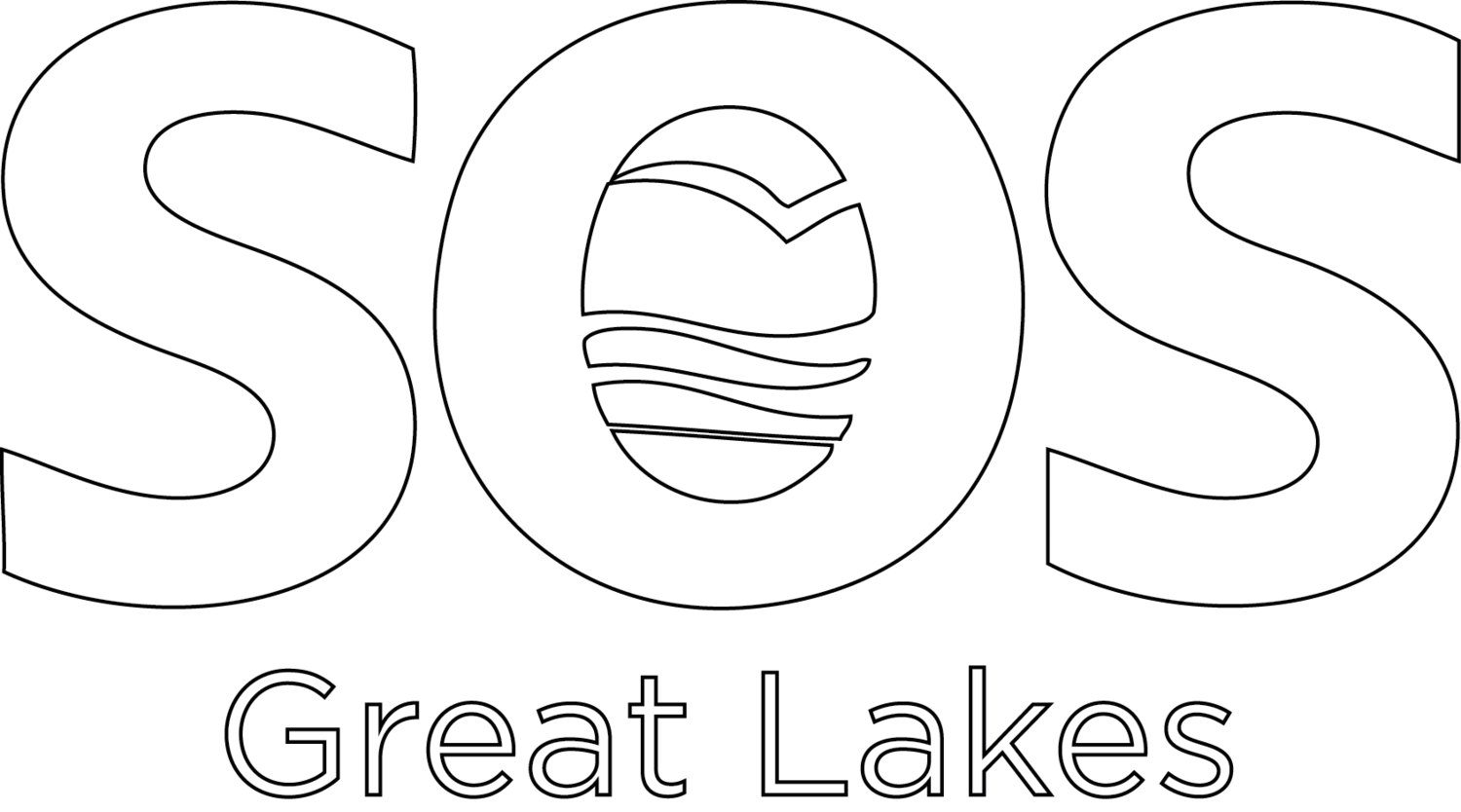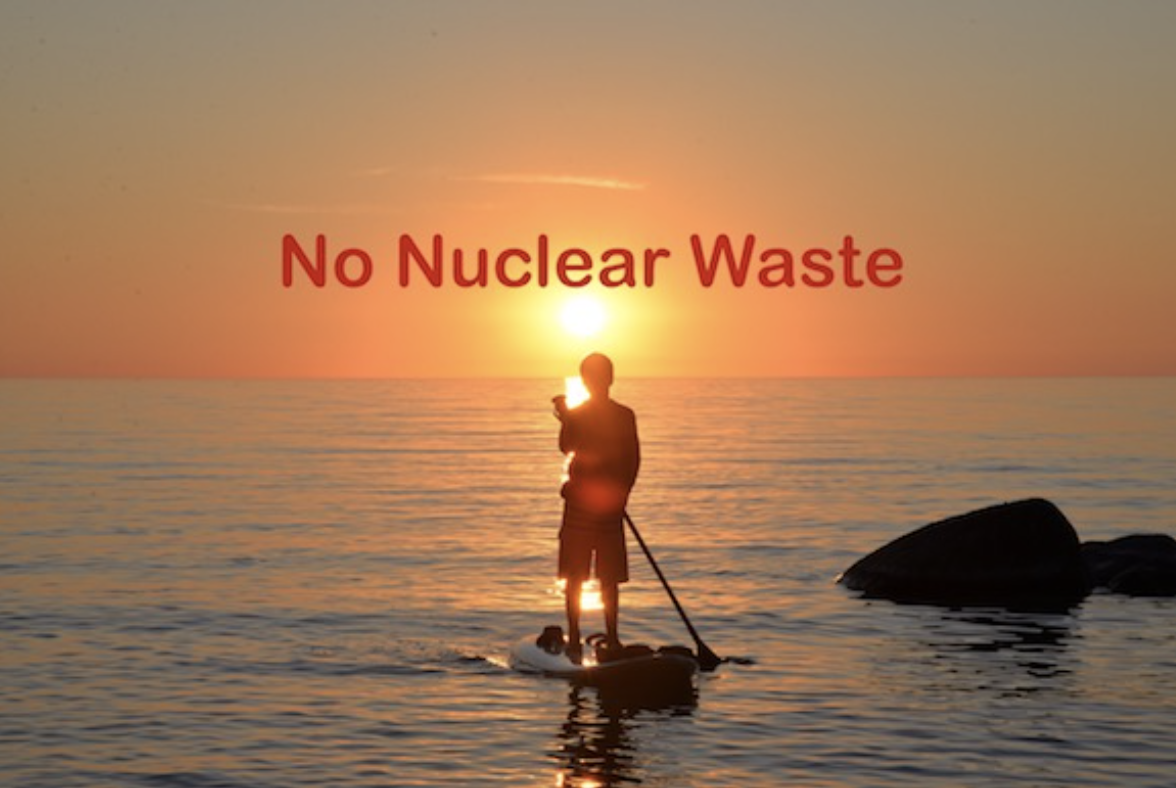McKenna’s Great Lakes Nuclear Waste Dump Dilemma
Blog 8: The Minister’s Second Escape Route – a Modern Look at an Alternative Means for ILW, Need and Cost
August 17, 2017: This is the last in a series of eight Blogs by Rod McLeod, retired lawyer, formerly Ontario Deputy Minister Environment (with the Liberals), and earlier, Deputy Minister Public Safety (with the Conservatives) after a time as Chief Crown Prosecutor and, latterly, 25 years of environmental law practice, and currently a Board member of SOS Great Lakes.
Background: Premier Wynne’s Government owns Ontario Power Generation Inc. (OPG). Kathleen Wynne, as head of the Government, has allowed OPG to continue to plan to build a nuclear waste dump on the shore of Lake Huron, the central of the five Great Lakes that provide drinking water to 40 million people in Canada and the U.S. This Deep Geologic Repository (DGR) would hold 400,000 cubic metres of Intermediate and Low Level Waste (I&LLW). ILW can include reactor parts and other decommissioning waste that will remain dangerously radioactive for hundreds of thousands of years. When that material leaks, as every other Deep Geologic Repository (DGR) in the world has, the rogue emissions will enter the Great Lakes, potentially causing unimaginable damage to the largest supply of fresh water in the world.
McKenna’s Dilemma: Allowing this dump on the shore of Lake Huron is a dangerous and unnecessary gamble with our drinkingwater and would be in stark contrast to many very important environmental protection principles and initiatives, on which the Trudeau Government was elected in 2015. At the same time she may be reluctant to be seen to be opposing the ever-popular vote-getting ‘’green” nuclear energy industry led by OPG.
Please click here for Blog 1 where I tell you a little about SOS GREAT LAKES and explain the significance of an April 2017 Report from her Expert Panel (EP). The EP proposes major changes in Canadian Environmental Assessment (EA) to restore faith in the EA with new fairer processes. It can and should help her with her upcoming decision to reject or accept the conditional first step approval for OPG’s plan granted by the Harper-appointed Joint Review Panel (JRP) at Kincardine. (Her decision is currently scheduled for fall 2017.)
In Blog 1, I stated my thesis: the Minister’s independent EP’s April 2017 Report provides her at least two ways out of this dilemma. Both require courage but with the help of her EP she may even be able to escape while continuing full support of nuclear energy, at least its green production cycle.
If after considering the totality of major errors and legal breaches described in Blogs 2 to 7, she still chooses not to see that “enough is enough”, I invite her to consider these three other very important issues not covered in earlier Blogs: Alternatives Sites, and Alternative Means, and Need\Cost. They are obviously inter-related and can lead her to her second escape route.
First, the law. CEAA, related Federal Guidelines, and their own Terms of Reference (TOR) were all breached by the JRP by allowing OPG to fail, and failing themselves, on all three of these related issues.
Alternatives
OPG has been asked at least 7 times to comply with the requirement of the governing statutes, guidelines and their TOR to identify, study and report on technically and economically feasible Alternate Sites. They have refused to do so, in each case, rewriting the question to avoid the one asked.
One of their later efforts was, at best, a bad attempt at humour, by providing a map of Ontario with GPS locations chosen that are widely scattered with no apparent coherent strategy. These include one in Lake Erie, one in the United States and one in downtown Toronto.
Enough said.
Alternate Means
With respect to this parallel requirement of examination of technically and economically feasible alternate means, it is important to remember this OPG proposal is for Intermediate Level and Low Level Waste (I&LLW). (HLW is not covered by the JRP decision and comes later.)
First, re ILW, which is still highly radioactive for more than 100,000 years, much of the rest of the world now uses monitored surface storage in enhanced containment or monitored near surface storage in appropriate host rock, in either case, away from fresh water.
Countries using these options include the Czech Republic, Finland, France, Netherlands, Spain, Sweden the UK and the US. They do this in the reasonable anticipation of technological advancement in recycling ILW.
Why not Canada?
And, OPG could do it right there for Bruce ILW, provided (1) it uses enhanced packaging and (2) it does so temporarily awaiting technological changes that permit recycling. Or, OPG could decide, as they should, that the ILW should be dealt with in the same fashion as HLW, well away from fresh water.
For LLW, (such as mops, rags, clothing) OPG, latterly, has finally acknowledged that deep burial is not necessary. Yet, in the proposal approved by the JRP, and now before the Minister, OPG used the large volume of LLW to justify their plan to create the DGR on such a large scale. Now, we can see that by emphasizing that the buried waste to be buried in the DGR was predominately LLW, the public has been deceived into thinking that the overall Kincardine waste burial plan was benign and nothing to worry about. Not true.
Need/Cost
OPG has now admitted that a DGR for LLW is unnecessary. The disposal of HLW is to be dealt with at a later time by the NWMO. That issue was not before the JRO, not before the Minister of the Environment and not dealt with here in these blogs. For ILW, there are two alternative means: 1) deal with it conjunction with HLW away from fresh water; or 2) store it temporarily in enhanced containment units pending technological change permitting recycling.
Why are Ontario taxpayers being asked to spend $2.4B, and climbing, for a hole that is not only dangerous to our drinking water supply, but unnecessary? OPG, however, is unwilling to disclose how it arrives at this amount and it is much lower than cost
estimates for European DGRs. A recent report suggests a range of $18-24B a DGR in sedimentary rock in Europe. As we have seen time and again with OPG’s cost projections, the real costs are always significantly higher.
It is difficult to imagine that an impact assessment, of the type recommended by the Minister’s EP, by people with the skill sets recommended by the EP, and applying the considerations recommended by the EP, would make the same mistakes on these three issues.
Why should the Minister?
Rod McLeod, Director, SOS GREAT LAKES





